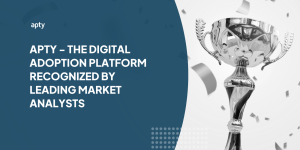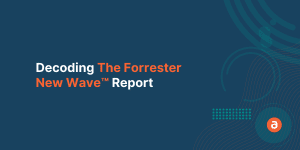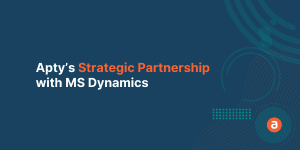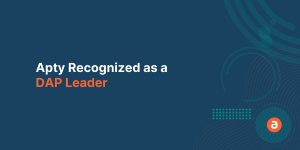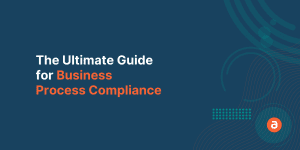Microsoft Dynamics is one of the most sought-after ERP solutions. Its incredible capabilities have helped it gain a market share of 8.12% with over 54,000 customers.*
With so many organizations using Microsoft Dynamics 365, there are different challenges that arise but the underlying problem is the same and can be solved with similar actions.
Regardless of the implementation strategy that your organization uses, it is always better to analyze and understand the software usage to identify unexpected trends that could make or break your whole Dynamics implementation initiative.
In our previous blog post, we discussed the Microsoft Dynamics Implementation challenges and in continuation to that, let’s talk about the solution to those challenges.
Top 5 Solutions to Microsoft Dynamics Implementation Challenges
- Plan, Identify, and Execute
- Create a Communication Strategy
- Analyze the Progress
- Prepare a Hybrid Training Program
- Measure, Understand and Improve
1. Plan, Identify, and Execute
75% of the ERP implementation initiatives fail and the major reason is poor planning. It is important to define goals, guiding principles, expected outcomes, resources, and the time frame of the project.
The Microsoft Dynamics project will have a severe impact on a lot of elements of your organization from processes to people.
Start by defining the goals based on what you expect to achieve from this implementation. Projects like these are implemented to improve agility, employee productivity, and operation cost and gain better insights to improve the bottom line of the organization.
Each persona and department has different goals and it is important to consider them in the planning document for better clarity.
While consulting with the implementation partner, decide how the success for each of these goals will be measured and how long it will take to realize it. Make sure that all these goals tie back to your organizational goals.
Get an experienced Dynamics consultant and a project manager in the implementation team to steer the project through uncertainties. They will also help you find gaps within the existing plan or approach that can be rectified or improved.
They will also help you prevent unnecessary customization within the Dynamics environment since that is a common reason for Microsoft D365 implementation failure. They understand that just because you can customize, doesn’t mean you should.
Once that is done, analyze the number of people who will be involved pre, during, and post-implementation. It will help you manage time and resources efficiently. Moreover, the organization will understand the kind of resources, tools, and expertise required to go through each phase.
Once the plan is designed and problems for each stage are identified, it is time to execute.
Don’t rush through the execution, rather plan it in a phase-wise manner and resolve issues parallelly as the project proceeds. As you pass through each phase, the number of problems should decrease and if that is not happening, there might be some serious issues in the designed process that is going unnoticed.
Once you plan the implementation, identify the problems, and execute the project, repeat the process.
2. Create a Communication Strategy
Communication is the most used term when it comes to transformation and change but there is no denying the fact that most big ERP projects fail due to poor communication.
If an organization wants to ensure successful Dynamics implementation, they must create a decision-making framework, delivery cadence, and evaluation procedures. If these are not done in the early phases, things can go very wrong towards the end of the project.
To carry out all these activities, a strict communication protocol must be followed. For instance, if the implementation team does not communicate about the changes that are happening within the process that employees are familiar with, it can lead to confusion and mistrust.

The communication strategy should prioritize creating a communication network that can influence resisting groups by addressing their fears and providing them clarity about the benefits that Dynamics implementation can bring.
Regular communication can help the leadership, implementation team, and other stakeholders to be on the same page. Any discrepancies can be tackled immediately with proper communication.
One such example of a communication channel is in-app announcements. They can be used to convey bite-sized information and that can be reinforced through bi-weekly meetings via video conferencing for detailed information exchange to keep the information flow running. It helps stakeholders understand the impact of change. It also saves the organization from any unnecessary customization and keeps the project simple yet effective.
A solid communication strategy not only saves the Microsoft Dynamics project from failing but also keeps the spirits of all the stakeholders high.
3. Analyze the Progress
Projects like Microsoft Dynamics are cost-heavy and underestimating the implementation and post-deployment cost can negatively impact the project. All elements of the project must be analyzed regularly or else it would burn a hole in the company’s budget.
As of 2017, the implementation of ERPs like Microsoft Dynamics faced 64% cost overruns. Organizations must continuously analyze their implementation progress to keep track of the efficiency that the employees are attaining with Dynamics. This can help understand if the dynamics implementation is bringing in enough ROI.
Tools like Digital Adoption Platforms (DAPs) can be used to gauge the efficiency of the employees on the application. They also help analyze the overall implementation trend.
DAPs help you measure the engagement rate within the organization and gives you valuable insights to measure the actual business outcome attained from the implementation.
You can create objective funnels for employees that consist of all the steps required to complete a particular task. If the user is not completing the task in the way it is intended, the objective funnel will show where they are going wrong. A huge benefit to this is that you can see which department is unable to follow the process more efficiently.
If the drop-off rate while completing the process is high, the problem is with the process. If it is less, it means that a few employees are unable to complete it or understand it. In that case, you can notify the users with an announcement and guide them through the process to finish the task in a more efficient way.
Tools like Digital Adoption Platforms not only provide detailed insights on application and user adoption but also help you create a solution to address the process and user adoption-related problems.
4. Prepare a Hybrid Training Program
Big organizations often create detailed Microsoft Dynamics implementation plans but quite often ignore training.
Training should never be an afterthought. It must be an integral part of the core implementation plan.
The team leader must create a training strategy and create a Hybrid training program that serves all types of learners.

There are usually 4 types of learner: visual, auditory, kinaesthetic, and reading/writing. It is important to consider all types of learners while creating the training program for Microsoft Dynamics.
Visual learners: They learn well through visual mediums like maps, graphs, charts, patterns and, shapes. They may not necessarily learn well through images and videos but learn efficiently when the relation between various aspects or steps is presented through shape.
Auditory learners: Auditory learners are individuals who learn better when they take in information that is passed in audio form. They learn better through group discussions, lectures, and activities that require talking. They benefit from recorded sessions as it helps them recall what they learn.
Kinaesthetic learners: They learn by performing actions. The best way that they learn is either in a simulated environment or in reality. They observe things better and remember by performing those actions.
Reading/Writing learners: They learn by either writing or reading. The best way is to give them documents and conduct quizzes to bolster their learning.
With a Digital Adoption Platform like Apty, the organization can create content in visual, kinesthetic, and reading formats.
Apty is primarily a platform that best suits kinaesthetic learners as the content is in the form of walkthroughs, announcements, and tooltips. However, this content can be converted into video and documents with just one click and can be hosted on a help deck within the Microsoft Dynamics application.
It not only provides immediate guidance and support but also helps them gain a deeper understanding of the processes and applications that they use, even without leaving the platform.
5. Measure, Understand and Improve
By now we know that a Digital Adoption Platform helps you analyze usage and make improvements during the implementation stage but even after implementation, you can use it to optimize the processes of D365.
When you go with an application like Microsoft Dynamics, the implementation becomes a never-ending process. As the organization is always looking to leverage the capabilities of the application, they are always looking for ways to optimize its processes to increase efficiency and drive better business outcomes.
But unfortunately, they get stuck with complexities that are generated out of their unnecessarily complex processes. As a result, it becomes difficult for them to leverage and optimize the benefits of the platform.
This is where an application like Apty comes in. Apty helps you measure user adoption across the organization and also to create content that can guide them at any point of need.
Even after creating the training content, it helps you analyze its usage and understand whether the training content has helped employees accomplish their tasks on the Dynamics application in the most efficient way.
A wide range of actionable data is available through Apty which helps organizations understand the application usage pattern, process efficiency, training content usage, and employee engagement rate.
Irrespective of where you are in the implementation journey Apty helps you to understand and optimize the process because “The problem is not in the software it is how you use it”.

